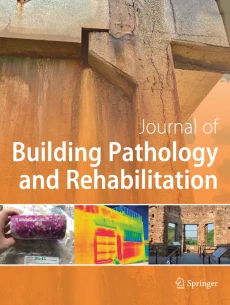In the distant past, construction solutions were validated empirically through several years of experience, whereas with the onset of further industrialization of the construction process, it was recognized within the construction community that a performance-based selection of materials, components, and systems was required if innovation was to be fostered and progress in the construction domain achieved. However, it was equally apparent to those promoting such novel approaches that the selection based on an understanding of performance requirements could only be met if the results of research and development were made available and indeed exploitable by practitioners.
Building pathology is the scientific study of the nature of building failure and its causes, processes, development, and consequences. In order to provide an economic and effective remedy to building defects, it is essential to identify properly the cause in order to address the problem. Rehabilitation is a strategic area that is concerned not only with historic buildings but also with other buildings that have been in use for some time and need to be adapted to the demands of the present. In that case, reusing materials that have already been produced or autochthones materials can therefore be a key part of sustainable construction.
The main purpose of this Topic Collection is to provide a set of research articles that contribute to the systematization and dissemination of knowledge related to building diagnostic techniques, hygrothermal behaviour of buildings, durability and service life analysis, eco-construction materials, building performance simulation, and, simultaneously, to show the most recent advances in this domain. It includes a set of new developments in the field of building physics, risk assessment of urban fire, building anomalies in materials and components, and new techniques for better energy efficiency analysis and diagnosis techniques, such as infrared thermography. It includes a set of new developments in the field of:
- Hygrothermal behaviour
- Building pathologies
- Costs of pathology
- Durability and service life
- Rehabilitation technologies
- Building diagnosis techniques
- Analysis of case studies
- Materials and their suitability
- Building performance simulation and energy efficiency.
This collection was curated by the Editor in Chief from articles that also appear in the journal's issues. The journal's standard peer review policy applies here. If an article was also included in a special issue of the journal, please see the instruction for authors for the special issue peer review policy.























